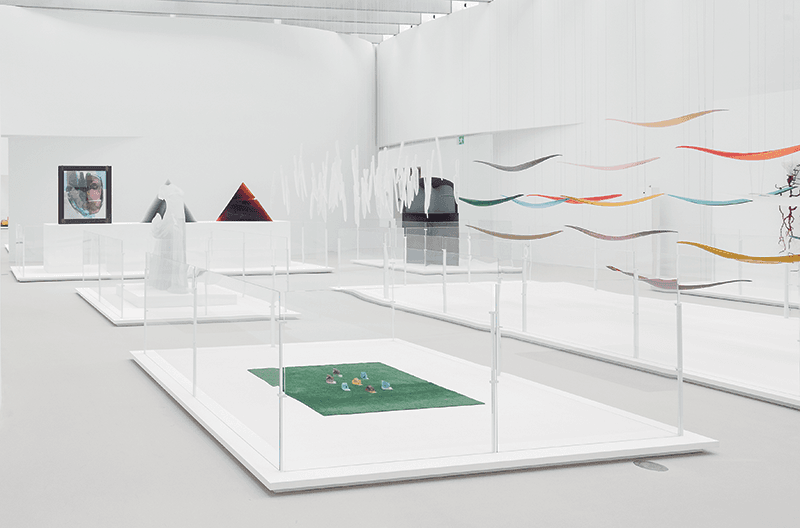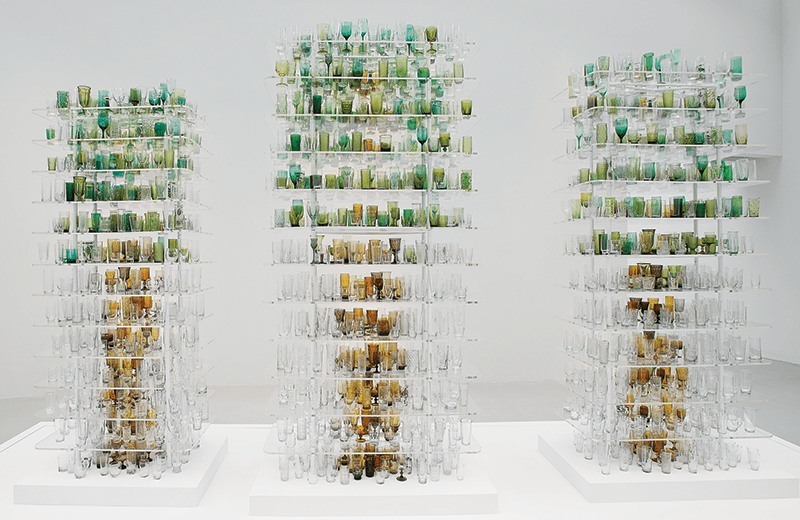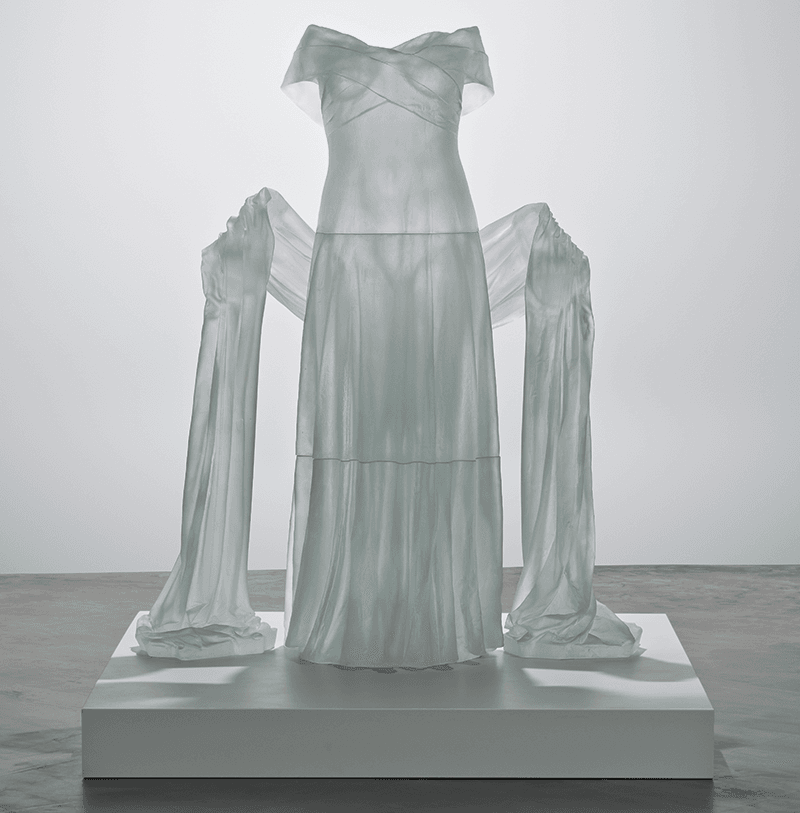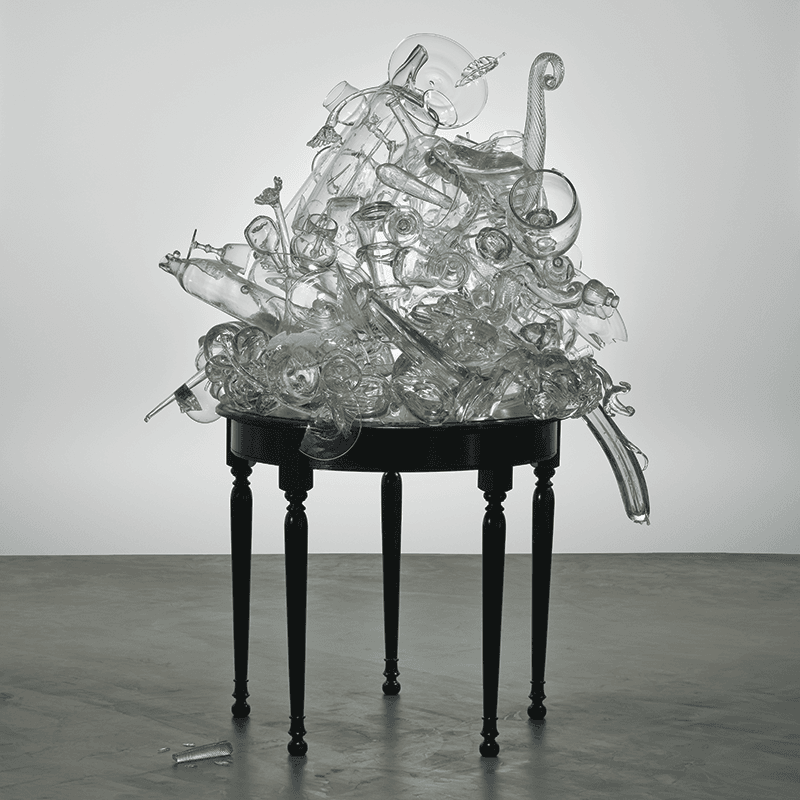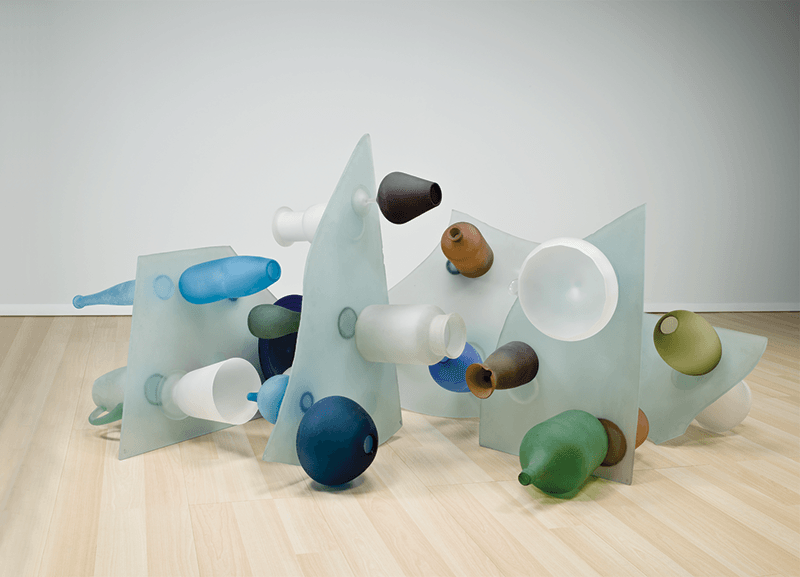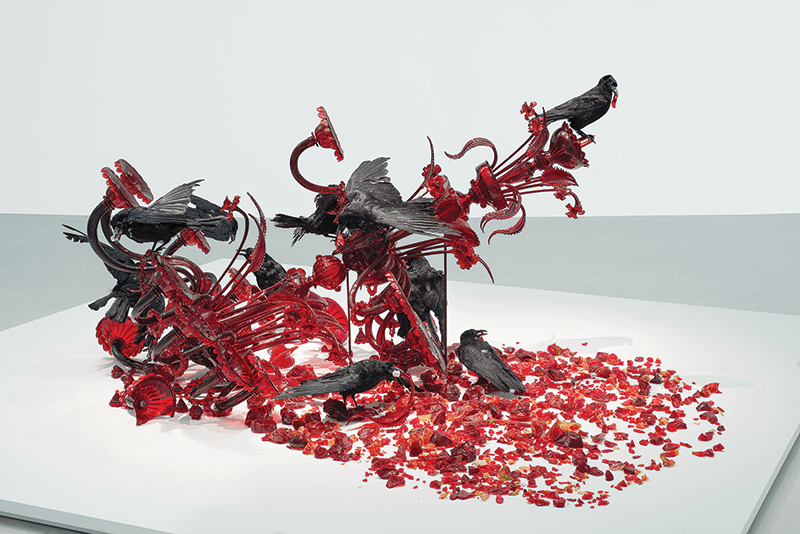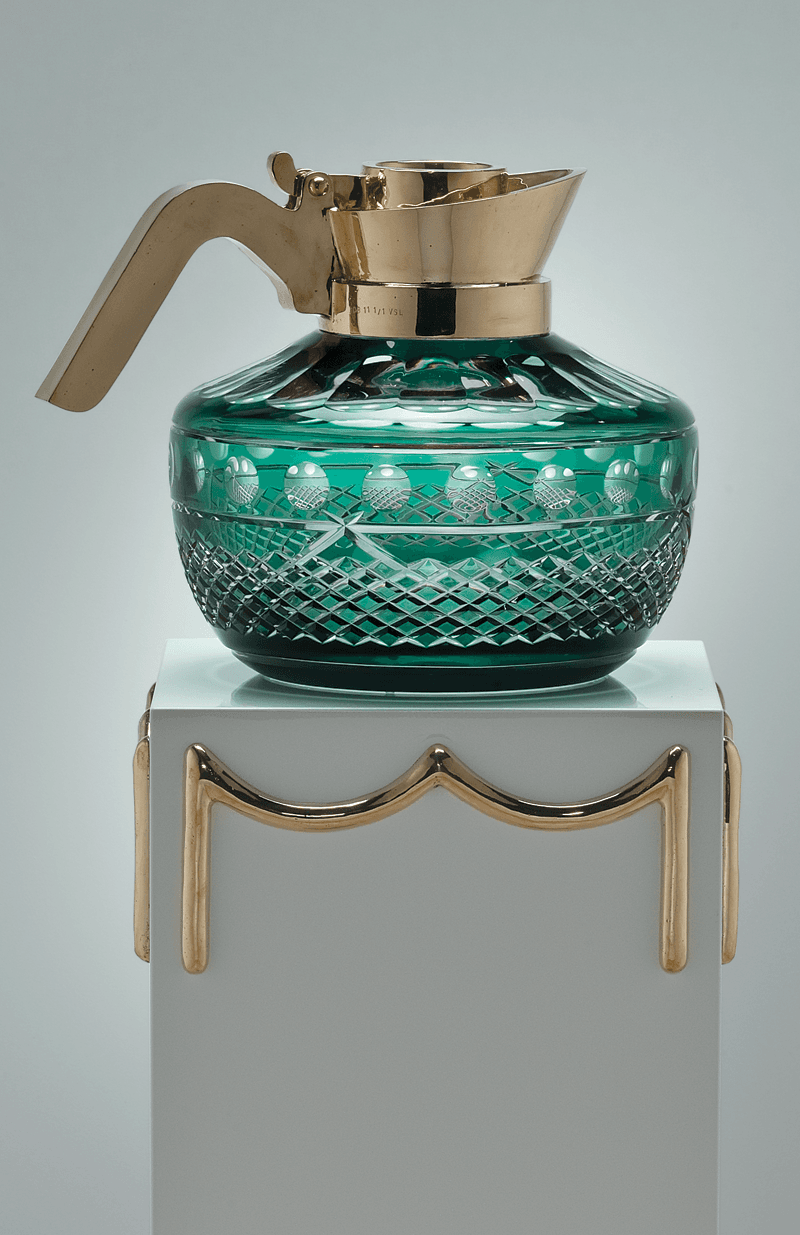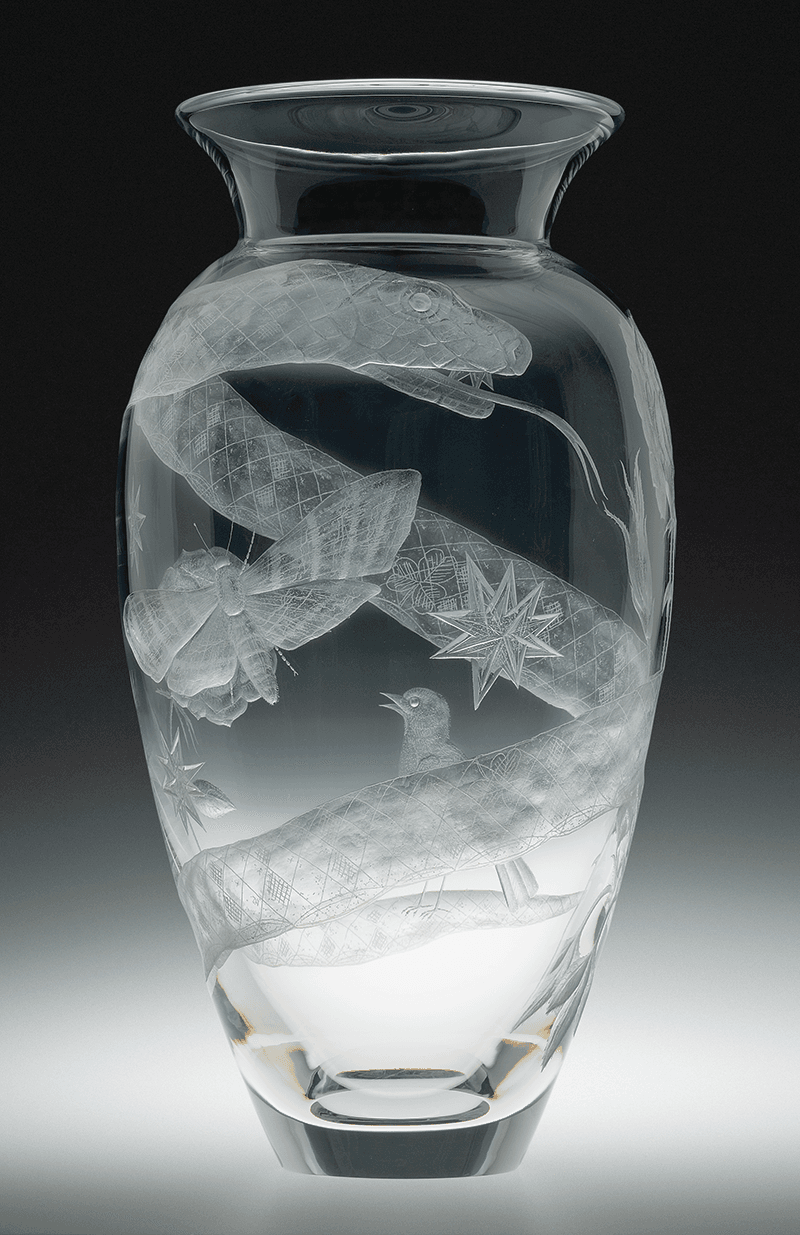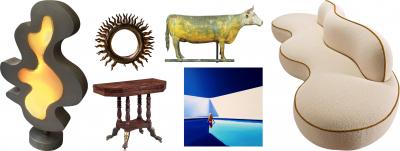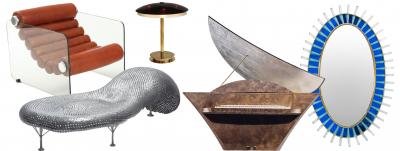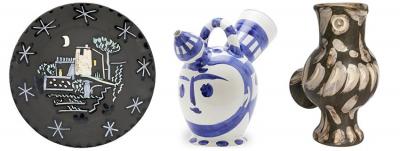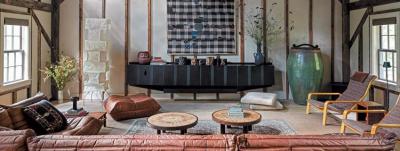Contemporary Glass Seen in a New Light
This spring the Corning Museum of Glass opened its light-filled, 26,000-square-foot art and design gallery building—comprising five interior galleries—designed by the New York City-based architects Thomas Phifer and Partners (Fig. 1). In addition, a new, 500-seat glassblowing amphitheater opened in the original blowing room of Corning’s historic Steuben Glass factory. Together they form the world’s largest spaces dedicated to the display of contemporary art and design in glass and to the demonstration of glassworking.
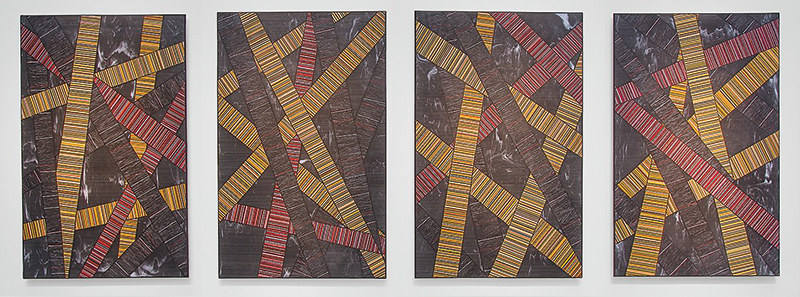
- Fig. 2: Klaus Moje (German, b. 1936), The Portland Panels: Choreographed Geometry, Portland, Ore., 2007. Kiln-formed glass, diamond-polished. Each panel: H. 189.2 cm., W. 120.6 cm. The Corning Museum of Glass. Gift in part of David Kaplan and Glenn Ostergaard and purchased in part with funds from James P. Flaws and Marcia D. Weber (2015.4.1).
Space and Light
The new Contemporary Art + Design Wing is a rectangular, minimalist structure clad in panels of white glass that create a nearly seamless, softly reflective expanse. The interior galleries feature white curving walls made of plastered concrete, inspired by the undulating form of Finnish designer Alvar Aalto’s iconic 1936 glass “Savoy” vase. The galleries are lit from above by natural daylight, complemented by LED track lighting. Outside the serpentine gallery walls, a perimeter walkway, punctuated with windows that look out onto the landscape, creates a porch-like space.
More than 135 works from the museum’s permanent collection of contemporary art and design are exhibited in the galleries and the “porch” area. Included are important recent acquisitions and large-scale installations never before on view because of space restrictions. The modern and contemporary glass collection was reinstalled to focus on the evolution of glass from a functional material to a material used in the service of art.
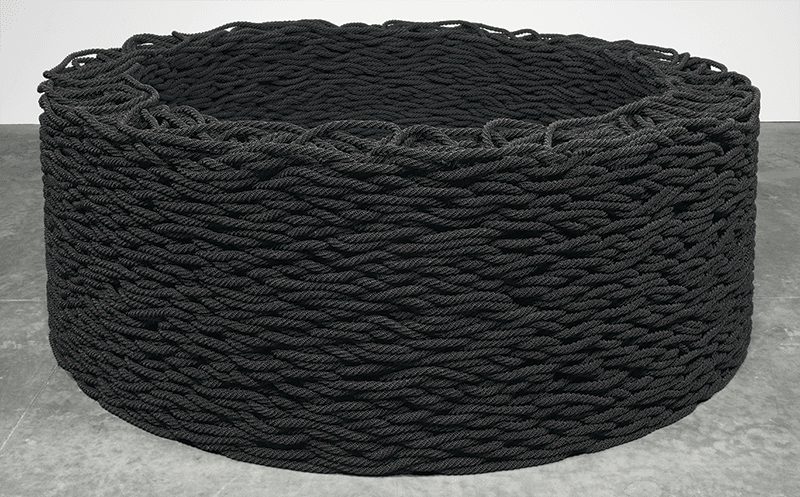
- Fig. 3: Liza Lou (American, b. 1969), Continuous Mile, Durban, KwaZulu-Natal, Republic of South Africa, and Los Angeles, Calif., 2006–2008. Glass beads, cotton. H. 31.5, Diam. 55 in. The Corning Museum of Glass; Purchased with special funds provided by Corning Incorporated in honor of the opening of the contemporary glass art and design gallery, March 2015 (2013.9.1).
The Modern Gallery, located in the aluminum, glass, and mirror building completed in 1980 by architect Gunnar Birkerts, features objects dating from 1900 to 1975. It traces the radical changes in glassmaking and its use from the Art Nouveau era to the beginning of the Studio Glass movement. The adjacent Ben W. Heineman Sr. Family Gallery of Contemporary Glass, housed in the original 1951 International Style building designed by Harrison & Abramowitz, examines how the Studio Glass movement between 1975 and 2000 blended art, craft, and design in a period that witnessed the evolution of glass as a material for contemporary art.
Visitors approach the new contemporary galleries from the museum’s admissions lobby, where they encounter Dale Chihuly’s sinuously organic sculpture Fern Green Tower (made in 2000 and reconfigured in 2013). In the main walkway of the new building, several large-scale artworks highlight glass as a material for contemporary art. These include Klaus Moje’s Portland Panels: Choreographed Geometry (2007) (Fig. 2), a monumental four-panel abstract painting composed of more than 22,000 hand-cut lengths of glass that have been heat-fused together and hand-polished with diamond pads. Another feature of the walkway is Continuous Mile (2006–2008) by Liza Lou (Fig. 3), composed of 4.5 million glossy black glass beads sewn onto a mile-long coiled and stacked cotton rope.
Some larger-scale artworks populate the perimeter area known as the “Porch,” including abstract sculptures by Daniel Clayman and Richard Whiteley, which investigate the effect of light on form. These are accompanied by The White Necklace (2007) by Jean-Michel Othoniel, and a massive untitled glass sculpture by Roni Horn that reflects the changing nuances of light and color throughout the passing hours of the days and seasons. Smaller-scale sculptures and vessels housed in wall cases continue the conversation of glass as a material for art, in addition to decorative arts, that is begun in the Museum’s Ben W. Heineman Sr. Family Gallery.
Nature
The interior galleries are organized by themes. One is dedicated to sculptures that refer to the natural world. Some artists, such as Michael Rogers and Marta Klonowska, use the animal as metaphor, while others, such as Debora Moore, Loretta Yang, and Flora Mace and Joey Kirkpatrick, consider flowers, or a simple bowl of fruit. This gallery is anchored by Katherine Gray’s Forest Glass (2009) (Fig. 4), an installation of thousands of repurposed green, colorless, and brown drinking glasses arranged on shelves to suggest a stand of three trees. Addressing the process of creating glass, which historically required the burning of acres of timber to fuel furnaces, Gray questions the impact of glassmaking on the environment in the past and present.
The Body and Narrative
Another gallery, which houses works inspired by the human body and by narrative, is anchored by Evening Dress with Shawl (2004) by Karen LaMonte (Fig. 5), a haunting sculpture about presence and absence, and Endeavor (2004) by Lino Tagliapietra, an installation of colorful abstract forms inspired by the boats that gather in the Venetian lagoon for the annual Festa della Sensa (Feast of the Assumption of the Virgin). Narratives are told in works by Silvia Levenson and Judith Schaechter, while Nancy Bowen and Ann Wolff consider the complexities of the body and the psyche. Red Pyramid (1994) (Fig. 6) by Stanislav Libenský and Jaroslava Brychtová represents abstraction developed from the proportions of the body.
History and Material
The large artworks in another of the galleries reflect historical forms in glass and focus on its material properties. Untitled (White) (2000) by Josiah McElheny, Material Culture (2008) by Beth Lipman (Fig. 7), and Blood Sugar (1992) by Tony Cragg (Fig. 8) reference functional vessels so that we understand them in new ways. Installations by Javier Pérez (Carroña, 2011) (Fig. 9) and Cerith Wyn Evans (Evening, 2008–2013) exploit the beauty and drama of Venetian chandeliers, creating statements very different from that of functional lighting fixtures. The unique properties of glass—its transparency and opacity, reflectivity, optical effects, and ability to hold color and scatter light—are explored in sculptures by Jun Kaneko, Michael Scheiner, Nicole Chesney, and Marian Karel. A Tire (2005), by Robert Rauschenberg uses glass to transform a throwaway industrial object into an item of seemingly precious luxury.
Contemporary Design
The contemporary artworks in glass are balanced by a selection of functional glass vessels, lighting, and furniture produced by international designers over the last thirty years. Highlights are the slumped float glass Ghost Chair (1987) by Cini Boeri and Tomu Katayanagi for Fiam Italia, Danny Lane’s “Etruscan” chair (1992), and the elegant bronze and glass “Triscosta” cabinet (2014) by Christophe Côme. Functional lighting includes hanging lamps by Tejo Remy and René Veenhuizen and Patrick Townsend, and chandeliers by Maria Grazia Rosin and Dan Dailey. Design art is represented by Studio Job’s outsized Coffee Pot (2011) (Fig. 10), which grafts the American roadside diner of popular culture onto lavish European cut glass.
Functional vessels include recent designs for Steuben Glass, such as Kiki Smith’s Tattoo Vase (2008) (Fig. 11), in which images are tattooed, or engraved, onto the surface of the glass. A range of other approaches include the refined wares designed by Ted Muehling for Steuben and J. & L. Lobmeyr, and the sustainable products made of recycled glass designed by Toord Boontje and Emma Woffenden for Artecnica. The gallery also focuses on the role that GlassLab—a pioneering collaboration between international designers and master glassmakers from the Corning Museum—plays at the forefront of new glass design by presenting a selection of prototypes created over the past seven years.
Special Projects
In a space dedicated to temporary projects and large-scale installations, the inaugural installation spotlights the recent acquisition Constellation (1996) by Kiki Smith. The room-sized work is a meditation on the infinity of space and the survival of our world. Designed by Smith after a nineteenth-century celestial atlas, twenty-nine hot-sculpted glass animals cavort among cast-glass stars and cast-bronze scat on a night sky made of handmade indigo-dyed Nepal paper.
Art and Process
The museum emphasizes process as much as it celebrates the finished product. The new Amphitheater Hotshop is equipped with state-of–the-art equipment and has programming plans that involve demonstrations of the art and science of glassworking. Cutting-edge glassmaking technology has inspired new glass demonstration programming, including complex performances, public working sessions with designers, artists, and architects that enable experimentation with the material and the collaborative creation of larger-scale work that employs multiple glassmaking techniques.
The exploration of art and process is also offered through the GlassApp interpretive program. This Wi-Fi-enabled program encourages visitors to utilize the museum’s comprehensive online resources, accessed through electronic handheld devices, to increase their understanding of the artists and artworks they encounter.
Tina Oldknow is the senior curator for modern and contemporary glass at the Corning Museum of Glass, Corning, New York.
This article was originally published in the Summer 2015 issue of Antiques & Fine Art magazine, a digitized version of which is available on afamag.com. Antiques & Fine Art, AFAmag, AFAnews, and AFA Publishing are affiliated with InCollect.com.















